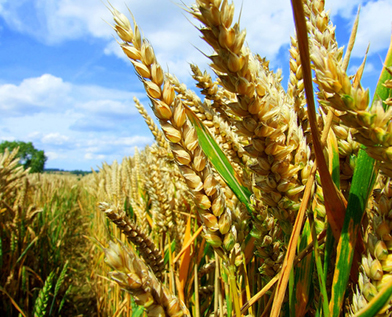Agricultural crisis in Pakistan
By Tayyab Safdar
 The
agriculture sector continues to be of little interest to
policymakers.
The
agriculture sector continues to be of little interest to
policymakers.
In official circles, there
seems to be little effort to understand the complexities and
challenges facing it.
The performance of
agriculture has repercussions at multiple levels for the
national economy.
For one, it continues to
be the largest employer in the country accounting for 45 per
cent of the labour force.
This brings us to the
results of the latest Agriculture Census of Pakistan (ACP)
2010, released by the Pakistan Bureau of Statistics.
The agriculture survey is
carried out once every 10 years, the last one being in 2000.
The data from the ACP-2010
brings to the fore a number of issues that can be seen
besetting the rural areas and requiring urgent attention,
not only from policymakers and politicians but also from
academics.
So what are the changes that have taken place in the rural
landscape of the country? For one, there has been a
substantial increase in the number of private farms in the
country in the decade between the two surveys.
While farm area has increased by a lower percentage, much of
the increase in farms has been a result of natural division
of landholdings.
On delving deeper into the
results of the census, one finds that the largest increase
has taken place in the category of marginal and small
farmers.
The Food and Agriculture
Organisation classifies farms of less than 0.5 to one
hectare as ‘marginal farms’. The latest census data shows
that the number of marginal farmers has increased by
slightly over 50 per cent in the period between the two
censuses.
While such marginal farms made up to 36 per cent of the
farms in 2000, covering almost six per cent of the farm
area, they now account for almost 44 per cent of farms
owning a paltry eight per cent of farm area in the country.
In absolute numbers, the increase is perhaps more stark. In
the previous census held in 2000, the number of marginal and
small farms was 3.81 million; by 2010, the number has risen
to 5.36 million farms.
Most of these small and
marginal farmers are dependent on less than two hectares of
land for their livelihoods.
These figures are extremely
troubling. The availability of small areas for cultivation
is a hindrance to the welfare of entire families, especially
when livelihoods are greatly dependent on agriculture.
One outcome of the increasing
numbers of small and marginal farmers could be an increase
in urban migration as a way to escape poverty. Pakistan is
already the most highly urbanised country in South Asia.
Increasing migration from rural areas is bound to create
more pressure on already stretched urban metropolises.
Secondly, as industrial
growth in the country remains stunted and much of the
installed industrial base is already capital-intensive, most
migrants will be forced to work in the service sector.
Constraints of capital and education mean that a majority of
them will probably end up working in the informal service
economy; often at extremely low wages and the cycle of
poverty and exclusion will be reinforced.
While research by
international organisations and NGOs has, in the recent
past, paid increasing attention to improving the conditions
of small and marginal farmers, the state in developing
countries like Pakistan needs to urgently take the onus.
The Pakistani state is perhaps ill-equipped for dealing with
these challenges. Even the fundamental realisation that the
increasing number of small and marginal farmers is a serious
social and economic issue that needs to be addressed
urgently seems to be missing.
For the government, dealing with the increasing numbers of
marginalised and small farmers needs to start with a
fundamental rethink of rural development strategies.
Increasing investment in the
provision of agricultural extension and management services
that focus on this segment of the rural population could be
a good starting point.
While many economists in Pakistan talk about the knowledge
economy and leapfrogging labour-intensive stages of
development, dealing with the increasing number of marginal
and small farmers that make for a substantial portion of the
rural poor is a problem that is likely to get far worse if
urgent steps aren’t taken to address the problems they face.
February, 2014
Source:
The Express Tribune